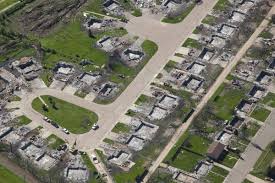Remembering the Inferno
In May 2011, the small community of Slave Lake, Alberta, faced an unprecedented disaster. A wildfire, fueled by parched conditions and strong winds, engulfed the town, destroying over 400 homes and leaving thousands displaced. The Slave Lake fire, as it came to be known, became a stark reminder of the increasing threats posed by climate change and the realities of living in wildfire-prone areas.
The Impact on the Community
The fire had devastating immediate effects: by the end of the first week, approximately 30% of Slave Lake lay in ruins. Citizens were forced to flee, leaving behind their belongings and memories. As of 2023, many residents still bear the emotional toll of the event. Utility services took months to restore, and rebuilding efforts faced hurdles, from funding issues to emotional scars.
Statistics paint a grim picture. According to the province, more than 1,700 people required emergency shelter, and recovery costs exceeded $700 million. Yet, amid these staggering figures, stories of resilience have emerged. Local entrepreneurs and community organizations banded together to support those affected, showcasing a spirit of solidarity that continues to this day.
The Role of Environmental Changes
Experts have pointed out the role of climate change in exacerbating wildfire risks across Canada. “The Slave Lake fire highlighted how volatile our environment has become. As temperatures rise and drought conditions become more frequent, communities like Slave Lake are on the front lines of this crisis,” said Dr. Michael Kunze, an environmental scientist specializing in wildfire management.
Moreover, forest management policies were scrutinized in the aftermath, prompting questions about how best to mitigate future risks. The lessons learned from Slave Lake have shaped ongoing discussions in Alberta about sustainable forestry and land use practices.
Public Sentiment and Recovery Efforts
The response from the public hasn’t waned over the years. Social media posts often circulate on anniversaries, with hashtags like #SlaveLakeStrong reminding us of the perseverance and courage demonstrated by residents. From fundraising events to awareness campaigns about wildfire preparedness, the community remains active in ensuring that such devastation is not repeated.
One local resident expressed, “The fire changed us, but we’re more united now than ever. Rebuilding our community wasn’t just about physical structures; it was about healing together.” This reflects a broader sentiment that has taken root in Slave Lake—recognition that while the scars may remain, resilience and support can pave the way for recovery.
Looking Ahead
As Alberta continues to grapple with environmental challenges that heighten wildfire risks, the Slave Lake fire remains a pivotal learning point. In the decade since, policies have been adjusted, community preparedness has improved, and incident response strategies have been refined. While nature holds undeniable power, the strength of a community can rise to face even the most formidable challenges.
